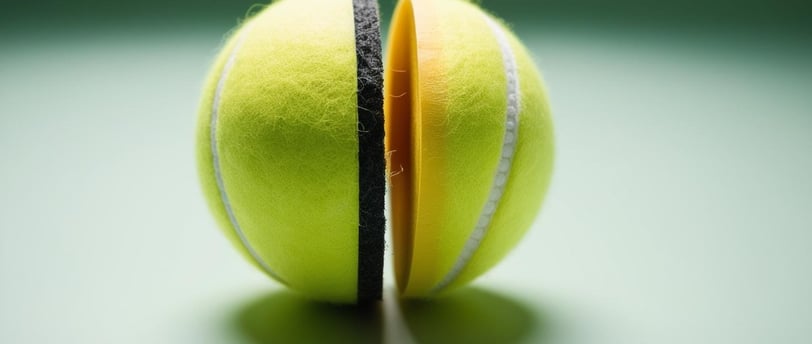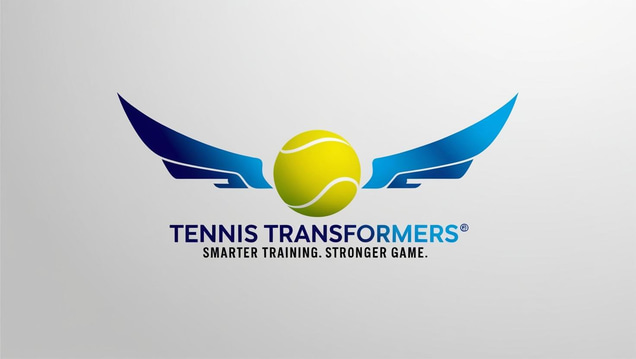Hidden Environmental Cost of Tennis Balls
Uncover the hidden environmental cost of tennis balls and explore why eco-friendly options are scarce. Learn about tennis ball recycling and sustainable alternatives to reduce your carbon footprint and make a positive impact today.
TENNIS TALK
3/4/20254 min read


Can Tennis Go Green
Tennis, one of the world’s most popular sports, has a secret hiding in plain sight: tennis balls. Every year, an estimated 300 million tennis balls are manufactured globally, and most of them end up in landfills. The vast majority of these balls are discarded after just a few matches, especially at the professional level, contributing to a significant waste stream that few players, fans, or even tennis organizations think much about. The problem is, tennis balls can take up to 400 years to decompose!
Given the increased awareness of environmental issues across industries — from sustainable fashion to electric vehicles — it’s surprising that the tennis world has been so slow to develop eco-friendly tennis balls. Why haven’t these been widely adopted or even successfully developed? The answer lies in a combination of technological challenges, industry inertia, and player preferences, all of which present obstacles to making tennis greener.
The Composition Problem: Why Tennis Balls Are Inherently Unsustainable
To understand the core environmental challenge, it helps to understand what a tennis ball is made of. Modern tennis balls consist of a pressurized rubber core encased in a fuzzy felt made from a blend of wool and nylon. This mix of natural and synthetic materials is extremely difficult to recycle.
The rubber core is pressurized with air or nitrogen to give the ball its signature bounce. However, rubber itself is a challenging material to recycle, especially when combined with pressurization and other materials.
The felt covering is partially synthetic (nylon), which contributes to the microplastic pollution problem. Synthetic fibers shed during play, adding to global plastic waste.
Because the ball is made of multiple layers of different materials, disassembling and recycling it is costly and impractical. In short, tennis balls are essentially designed to be single-use items with no clear end-of-life pathway other than the trash.
Performance Demands – Players Want Consistency
Another major barrier to eco-friendly innovation is player expectations. Tennis players — from club-level amateurs to professionals — are highly sensitive to the feel and performance of tennis balls. Bounce, spin, and durability are all non-negotiable qualities.
The ITF (International Tennis Federation) has strict standards for ball weight, size, and bounce, leaving little room for experimentation.
Many attempts to introduce more sustainable materials — such as biodegradable felt or alternative cores — have failed because they couldn’t match the playability of traditional balls.
Even small changes to the ball’s weight, fuzziness, or bounce could alter gameplay dynamics, making any eco-friendly ball a hard sell, especially at competitive levels. As a result, manufacturers are reluctant to invest heavily in R&D for greener alternatives when the risk of rejection by players and governing bodies is so high.
Short Lifespan and No Recycling Path
Tennis balls have an extraordinarily short lifespan, especially in professional matches where they are typically replaced every 7 to 9 games. That means even the highest-quality balls are only used for about 30 minutes before being discarded. This built-in disposability makes the overall environmental footprint of tennis particularly wasteful.
Even outside of professional play, balls lose pressure relatively quickly. Unlike aluminum cans or plastic bottles, there’s no widely available infrastructure for recycling used tennis balls, and the materials they’re made from further complicate the process.
Failed Innovations – Why Greener Prototypes Stumble
There have been several attempts to develop eco-friendly tennis balls, but none have gained significant traction.
Some companies have experimented with biodegradable felt, but these prototypes often degraded too quickly, affecting performance.
Others have tried natural rubber cores, but they struggled to maintain consistent bounce and pressure.
Even if the materials problem were solved, supply chains and manufacturing processes would need overhauling to support sustainable sourcing and production, which would require considerable investment.
The tennis ball industry is dominated by a few large manufacturers, which reduces the pressure for innovation. Without regulatory mandates or strong consumer demand, there’s little incentive for these companies to change a product that has worked (at least financially) for decades.
Potential Solutions – How Tennis Could Go Green
Despite the challenges, there are promising directions the tennis industry could explore:
1. Pressurized Ball Refill Systems
Several startups have developed ball pressurizing containers that allow players to re-pressurize balls after use, extending their lifespan. While this doesn’t make balls inherently more eco-friendly, it reduces consumption and waste.
2. Recycling and Collection Programs
Tennis clubs and tournaments could adopt take-back programs, where players drop off used balls for collection and potential recycling into other products, such as:
Playground surfaces
Dog toys
Insulation materials Although this is downcycling, it’s better than landfill disposal.
3. Material Innovation
There’s room for research into new bio-based materials for both the core and the felt. Perhaps:
Natural latex rubber could replace synthetic rubber.
Plant-based felt could replace synthetic blends.
Compostable balls could be designed for recreational play, where perfect bounce is less critical.
4. Performance Graded Balls
Could there be a system where competitive matches still use high-performance balls, but recreational or practice sessions use slightly lower-performing, but fully biodegradable balls? Segmented solutions like this could reduce overall waste.
5. Industry-Wide Sustainability Mandates
Governments or the ITF could impose sustainability standards, requiring a percentage of tennis balls to come from recycled materials or include biodegradable components. Without top-down pressure, the market may remain stagnant.
A Game in Need of Change
Tennis players love the sport for its precision and athleticism, but the price for that perfection is an environmental cost that is no longer acceptable in today’s climate-conscious world. While the technological and cultural hurdles are real, they are not insurmountable. With greater awareness, player demand, and industry innovation, tennis could embrace sustainability without compromising the integrity of the game. Until then, every lob and serve comes with a hidden environmental price tag.
©2025 Tennis Transformers. All rights reserved
Disclosure
This website contains affiliate links. If you purchase through these links I may earn a small commission at no extra cost to you. I only recommend products I believe add value to you. This helps support my work and allows me to continue providing valuable content. Thank you for your support!
